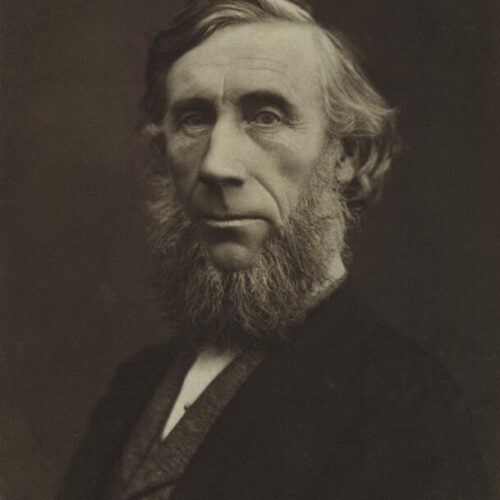

All religious theories, schemes and systems, which embrace notions of cosmogony, or which otherwise reach into the domain of science, must, in so far as they do this, submit to the control of science, and relinquish all thought of controlling it.
John Tyndall, Address Delivered Before the British Association Assembled at Belfast (1874)
John Tyndall was a scientist and mountaineer, whose 1874 address to the British Association for the Advancement of Science in Belfast became a touchstone for the primacy of science over theology. Humanists like Harriet Law, writing in The Secular Chronicle in 1877, highlighted Tyndall’s ‘utter disbelief in any such thing as a creator of the Universe, and… his conviction of the impossibility of any supernatural occurrence.’ His Belfast address, Law wrote, was ‘a sign that the Rationalisation of the world has of late made rapid and sure progress’. Alongside other proponents of a scientific understanding of humanity and the world, Tyndall played a key part in shifting the attitudes of Victorians, working closely with other leading thinkers and educators. Among these was T.H. Huxley, whose agnosticism he shared.
The biography reprinted below was first published in October 2009 as part of the Dictionary of Irish Biography. It is reproduced here under the terms of the Creative Commons Attribution Non Commercial 4.0 International license.
Contributed by McMillan, Norman
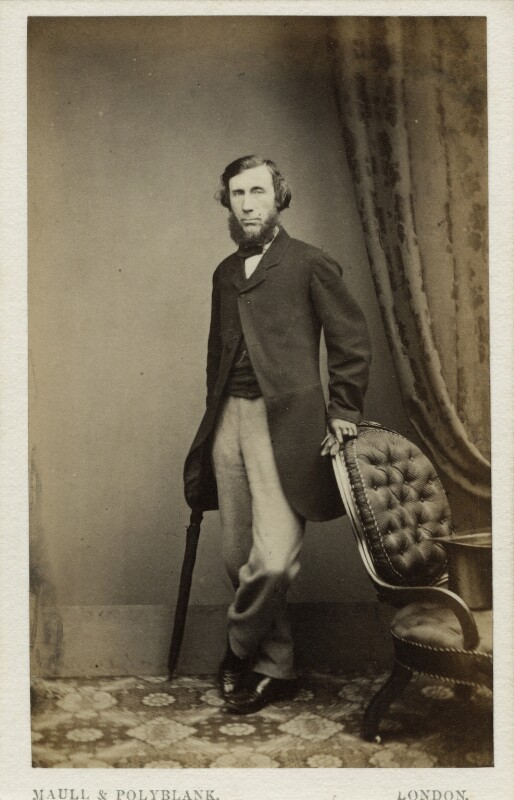
Tyndall, John (1820–93), scientist and mountaineer, was born 2 August 1820 in Leighlinbridge, Co. Carlow, only son among two children of John Tyndall (1792–1847) and Sarah Tyndall (née McAssey; d. 1867). His father came from a family of small landowners in Co. Kilkenny, acted as land agent for the Steuart estate, and supplemented his income by mending boots. His mother came from the Malone family, which owned considerable landed property near Fenagh, Co. Carlow; however, his maternal grandmother, having married against her father’s wishes, had been disinherited. At some stage the family moved to Castlebellingham, Co. Louth, where Tyndall nearly drowned in the Clyde river during one of the first of his life-threatening adventures. His main school education was in Ballinabranagh, Co. Carlow, under the tutelage of John Conwill. This former hedge-school teacher ended his career in what was, for him, the luxury of a one-room ‘non-denominational’ national school in the grounds of the catholic church. John left at 19 years, with an education that included English, logic, bookkeeping, drawing, and, most importantly, surveying and associated mathematics.
Early career; Queenwood Hall and Marburg
He joined the Ordnance Survey office in Carlow from school, moving from there to Youghal, Co. Cork. Tyndall felt fortunate to be chosen (1842) to transfer to the English survey, where he was posted to Preston, Lancashire. Despite working long hours, Tyndall began attending classes in the local Mechanics’ Institute. As leader of the malcontents over the working conditions in the Ordnance Survey, he was summarily dismissed (November 1843) and entered into a public dispute with Robert Peel (qv) in the Liverpool Mercury. He was unemployed for a period, but eventually found work as a surveyor with Manchester partners Nevin & Lawton, and then on the West Yorkshire line as a railway surveyor. During this time he developed his prodigious walking capacity and the stamina that was to serve him so well later as a mountaineer.
[Edward Frankland and John Tyndall] established the first programme of practical science and engineering ever established in Great Britain and Ireland, in what were almost certainly the earliest science and engineering school laboratory facilities.
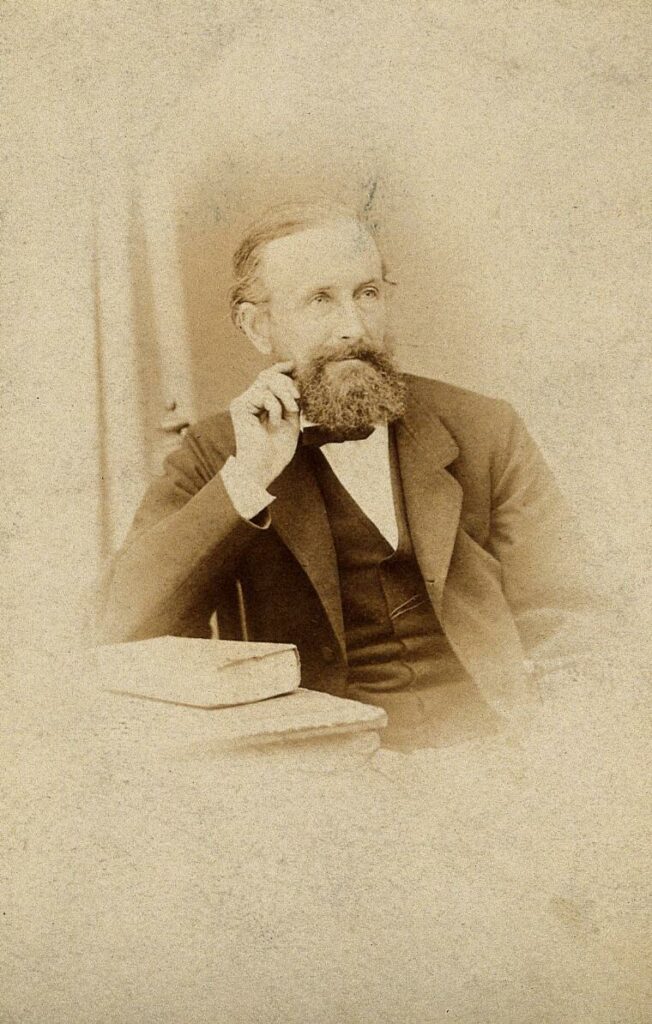
Tyndall’s interest in physics and engineering education began in 1847 when he met George Edmondson, who at the time was endeavoring to introduce the elements of experimental science into his quaker school, Tulketh Hall, Preston. Edmondson shortly thereafter entered into negotiations with representatives of the communalist Robert Owen to take over ‘Harmony Hall’ near Stockbridge, Hampshire, the unsuccessful school which was Owen’s last great social experiment. The Hall stood on its own 500-acre self-sufficient farm, boasting palatial buildings with the latest educational facilities, including an agricultural school with a purpose-built science laboratory, printing office, and carpenter’s and blacksmith’s shops. The name was changed to Queenwood College. Edward Frankland, another passionate self-improver, became superintendent of the chemistry laboratory, and the younger Tyndall superintendent of the engineering laboratory. The two established the first programme of practical science and engineering ever established in Great Britain and Ireland, in what were almost certainly the earliest science and engineering school laboratory facilities. The importance of this pioneering work was, a decade later, amplified into the national arena with the appointment (1853) of both men as examiners in the Department of Arts and Science. Frankland was the first government examiner in chemistry and Tyndall in physics. Indeed, physics – which as a subject Tyndall did so much to define in Britain – was a new school subject that came from revolutionary France via Germany. Tyndall was also appointed (1857) as the first chief examiner for military examinations for the Royal Engineers and Royal Artillery.
In October 1848 Frankland and Tyndall left Queenwood to attend – at their own expense – Marburg University, the centre of the radical scientific materialist movement. Tyndall wrote his Ph.D. thesis in 1849, after intense study, on ‘Die Schraubenfläche mit geneigster Erzeugungs-Linie und Bedingungen des Gleichgewichts für solche Schrauben’ (‘screw surfaces with inclined generatrix, and the conditions of equilibrium for such screws’). He studied chemistry under the illustrious Robert Bunsen, whose own research interests in spectroscopy were to fire and shape much of Tyndall’s own later research ambition. On completing these studies, he moved decisively towards physics, collaborating with Heinrich Knoblauch, who had arrived in Marburg from Berlin, to produce his first published paper on the topic of diamagnetism. He extended his stay in Germany long enough to produce a second memoir with Knoblauch, and then to spend several months in Gustav Magnus’s laboratory in Berlin. His research fame by now was such that in his first memoir he felt able to dispute with Michael Faraday and Julius Plücker, both senior eminent Victorian scientists. In Berlin he cemented what were to be lifelong ties to the elite of Germany’s scientific community, working alongside Magnus, Poggendorff, Heinrich Dove, Emil du Bois-Reymond, and Rudolf Clausius.
In June 1851 Tyndall returned to Queenwood and continued his work on diamagnetism with small equipment grants from the Royal Society. His considerable work on this topic was only much later consolidated and published as Researches on diamagnetism and magne-crystallic action (1870). During a second spell at Queenwood he also undertook a considerable amount of translation work for William Francis. These translations in the Royal Society’s Philosophical Magazine cemented his German research links and brought to the British audience the latest and most important papers emanating from Germany.
Professor of natural philosophy; conflict with the scientific establishment
Tyndall gave the discourse at the Royal Institution of Great Britain (RI) on 11 February 1853 on the topic of diamagnetism, opposing his own theory to that of Michael Faraday. He was invited to give a second discourse and a course of lectures, and in May 1853 was elected to the chair of natural philosophy at the RI. Tyndall, indeed, abandoned his earlier German mathematical methodology and became an open disciple and advocate of Faraday’s pure experimental method. He repaid his debt to Faraday with his excellent scientific-biographical study Faraday as a discoverer (1868). He began his first series of independent researches on slatey cleavage, the real objective of which was to give experimental support to Faraday’s geological theories. This work, however, brought him into conflict with James D. Forbes of Edinburgh and thereby almost the entire Scottish scientific establishment, including the formidable duo, William Thomson (Lord Kelvin (qv)) in Glasgow and P. G. Tait in Edinburgh.
After the publication of Darwin’s On the origin of species (1859), this enmity with the Scottish establishment deepened. Initially, eight London-based evolutionists were organised from 1864… for the defence of the ‘great hypothesis’.
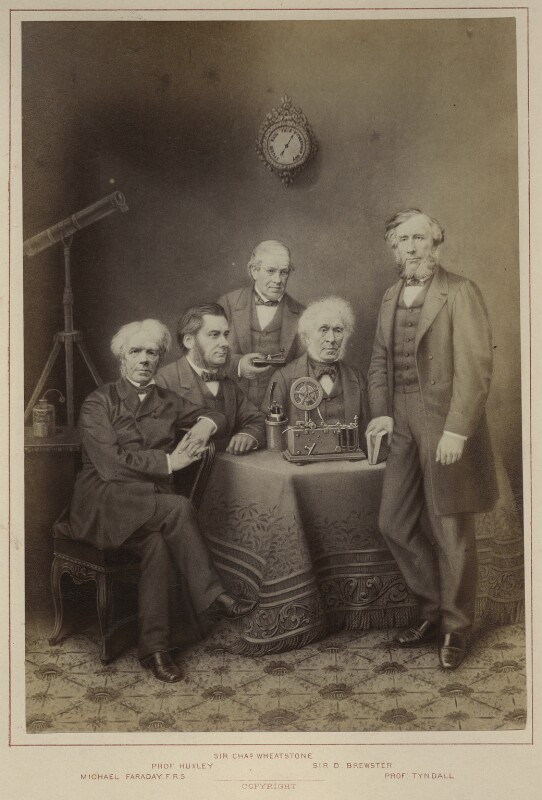
After the publication of Darwin’s On the origin of species (1859), this enmity with the Scottish establishment deepened. Initially, eight London-based evolutionists were organised from 1864 by Tyndall and Frankland from their base on Albemarle St. for the defence of the ‘great hypothesis’. The ninth member, William Spottiswoode, was admitted at the second meeting, and the club eventually became known as the ‘X–Club’ – so named because of the nine members plus their acknowledged, but always absent, ‘Xth’ member and leader Charles Darwin, who was too retiring to attend X-Club meetings, or indeed even to defend publicly his own theory. The members all adopted epithets – Xcentric (Tyndall), Xalted (T. H. Huxley), Xpert (Frankland), Xperienced (J. D. Hooker), Xquisite (John Lubbock), Xemplary (George Busk), Xhaustive (Herbert Spencer), Xtravagant (T. A. Hirst), and Xcellent (Spottiswoode). Each member took on the role of defending and deepening aspects of the theory. Tyndall’s was to provide the physics that underpinned life on earth, namely atmospheric physics.
Meteorology
Tyndall’s own research on radiation through gases and vapours from 1860 had provided the essential experimental basis for the science of meteorology, which was obviously central to the scientific arguments concerning life on earth. His book Contributions to molecular physics in the domain of radiant heat (1872) marshalled an array of new observations supporting the theory of evolution. He had come on this virgin field in 1860 through an invention. By improving the Melloni differential thermopile, he devised a new system of measurement to compare thermal radiation from two different sources. He systematically proceeded to measure the absorptions and emissions of all known gases and vapours. In his initial work Tyndall helped to disprove Melloni’s contention that infrared radiation was a different form of energy to visible rays, but importantly demonstrated that the Italian’s experimental results were otherwise valid. Tyndall and Melloni can be considered the founders of optoelectronics, and fathers of both infrared analysis and spectroscopy, based on Tyndall’s subsequent exhaustive heat studies over the next decade.
This long series of meteorological studies formed the basis of three Royal Society Baconian lectures on the subject (1861, 1864, 1881), in which Tyndall formulated a quantitative understanding of atmospheric physics and dealt with related issues such as nephelometry and floating matter in the air. Tyndall opened up the debate on the ‘greenhouse effect’ and used his experimental knowledge on the large absorptive capacity of water vapour to explain, for instance, meteorological conditions in deserts and other climates to great effect. In the latter part of these studies he turned to shorter wavelengths and found that these rays of ‘high refrangibility’ (ultra-violet) caused photochemical reactions. The resulting clouds of small particles scattered visible light to produce colours and in particular the vivid blue of the sky, known frequently as ‘Tyndall blue’. His investigations into scattering have led him to be honoured by the term ‘Tyndall scattering’ deriving from particulate matter. Tyndall made an impressive and comprehensive experimental study of the phenomenon, including polarisation studies. He pointed out with amazing prescience that space would be black, and produced (1869) ‘A cometary theory’ to explain the tail of a comet. His paper ‘A new series of chemical reactions produced by light’ (1869) was ground-breaking work in photochemistry, following the earlier efforts of Draper in 1843. These two men, together with Scheele in his pioneering work in 1775, founded photochemistry.
Nature ; conflict between science and religion
Tyndall joked that he had been an agnostic long before his friend invented the word. For Huxley and Tyndall, this creed was directed at purging metaphysical remnants from the province of science.
Tyndall played a central role in setting up the appropriately named evolutionist journal Nature, which would have again been deeply resented and seen as threatening by the scientific establishment with its own journals providing control of published science. In Britain Tyndall popularised Kant’s work and, with Huxley, established a fundamentally dualist philosophical basis to underpin the evolutionists’ position. He formally broke with religion in aiding Huxley to formulate a new world-view of sceptical, materialistic ‘humanism’. Tyndall joked that he had been an agnostic long before his friend invented the word. For Huxley and Tyndall, this creed was directed at purging metaphysical remnants from the province of science. Tyndall famously tackled religion head-on with his criticism of religious revelation and the efficacy of prayer in the long debate from 1861 to the mid 1870s; he suggested a ‘prayer gauge or test’, and openly stated his conviction that theological speculations were harmful. His strong anti-catholic tendencies saw miracles, the power of prayer, and observance of the Sabbath as violations of natural law. In the last analysis the evolutionists, like their German counterparts, were inspired to demand a new scientific and progressive ideology for the nation in a new imperial age. Importantly, in philosophy Tyndall made an enormous leap in developing the position of the German reductionists in his famous Belfast address (1874), but thereby deepened the gulf between religion and science. However, this position was perhaps more fully expounded in his 1870 British Association for the Advancement of Science lecture, ‘On the scientific use of imagination’, where notably he presaged du Bois-Reymond’s 1872 lecture, which is seen (probably wrongly) as ‘the’ philosophical milestone on this issue. He included human volition in an atomicist-evolutionary philosophical description of matter. Tyndall’s position was one of so-called ‘transcendental materialism’ in which matter having creative power does not lead to atheism, but rather agnosticism. Divorced from matter, Tyndall asks, where is life? He took a fundamental Feuerbachian position and, in his 1877 lecture before the Birmingham and Midland Institute, sought to demolish the ‘hypothesis of a human soul’. In his essay ‘Science and man’, the soul was ‘a poetic rendering of a phenomenon which refuses the yoke of ordinary physical laws’. In the Belfast address he already ‘had rejected the notion of a creative power’ and referred the ‘choicest material of the teleologists’ to natural causes.
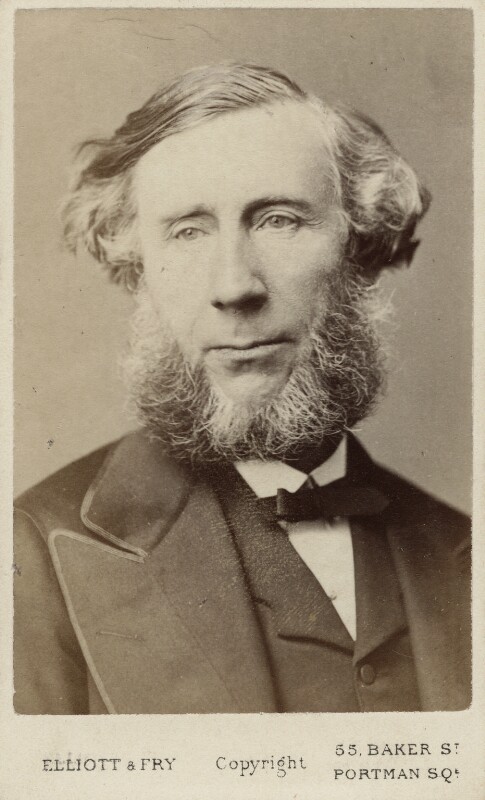
Publication, education, and invention
From 1859 Tyndall joined Huxley in preparing a regular science column for the Saturday Review and contributed to the middle-class publications Reader, the Fortnightly Review, the Contemporary Review, and the Nineteenth Century. His essays were collected into books still widely read, Fragments of science for unscientific people (1871) and New fragments of science (1892). Tyndall also held a chair of physics in the Royal School of Mines (later Imperial College), where he lectured regularly from 1859. His lectures to children were especially well received, and for many years he delivered the RI’s famous Christmas lecture series that grew into the series of school textbooks for the physics examination programmes of the Department of Science and Arts. He published a series of great popular textbooks based on his lectures – Sound: a course of eight lectures (1867), Notes on a course of six lectures on the motion and sensation of sound (1873), and On sound: a course of nine lectures (1878); Notes of a course of nine lectures on light (1869) which was followed by his Six lectures on light. Delivered in America 1872–3, reprinted usually simply under the title On light (1873); Notes on a course of seven lectures on electrical phenomenon and theories (1870), Lessons in electricity (1876) and Notes on electricity (1881); Heat considered a mode of motion (1863), and Notes of a course of juvenile lectures on heat visible and invisible (1877), and Notes of a course of six lectures (adapted to juvenile auditory) on ice, water, vapour and air (1871).
An important educator through his lecturing and writing, Tyndall was also a prolific inventor… A leader in developing the profession of physics, he refused to patent any of his inventions.
An important educator through his lecturing and writing, Tyndall was also a prolific inventor of experimental, demonstrational, and other equipment, including in 1854 the ‘light-pipe’, which led to modern fibre optics, and in 1871 the forerunner of all modern respirators. His researches in sound were important in the improvement of fog signals. A leader in developing the profession of physics, he refused to patent any of his inventions.
Pasteur and the debate on spontaneous generation
The biochemist Louis Pasteur experienced great difficulty in defending his germ theory against attacks by the hostile French medical establishment. Tyndall was induced in 1871 by Pasteur himself to begin work on disproving the theory of ‘spontaneous generation’ and hence settling the fierce ongoing dispute in favour of the germ theory. Tyndall entered the field of disease and infection with a paper, ‘Dust and disease’ (1871), based on studies using his nephelometric technique. Abiogenesis (spontaneous generation) held that living organisms could arise from inorganic matter. Tyndall, after incredible commitments of time over nearly a full decade, succeeded in devising methods of rigorous sterilisation and was thus able to prove the germ theory by reproducible bacteriological experiments. Pasteur had been unable to do so, because his process of sterilisation (later known as pasteurisation) had just a single heat stage, and consequently does not kill the spores of bacteria. Tyndall showed (1877) that the only reliable method of sterilisation (known as tyndallisation) is a process of intermittent heating. His monumental researches were published as Essay on floating matter of the air in relation to putrefaction and disease (1881). This work establishes Tyndall’s claim to be the founder of the experimental science of bacteriology, with Pasteur the theoretical founder of bacteriology/microbiology.
Tyndall worked very closely with Huxley and Lister, who all conducted painstaking microscopic examinations of their respective infusions and media. All three independently reported the attenuating effect of Penicillium some fifty years before the same observation by Alexander Fleming. Tyndall did not take the work further, probably because he did not want to be deflected from his and Pasteur’s agreed research objective, the destruction of Henry Charlton Bastian’s spontaneous-generation theory. Both Tyndall and Huxley saw victory in the late 1870s, in the Xs’ final defence of the theory of evolution. Tyndall demonstrated that life came from life in extended evolutionary processes that ruled out any possibility of spontaneous generation.
Mountaineering
It is worth commenting briefly on Tyndall’s role in founding the sport of mountaineering, as it is impossible to understand his great contributions to science without seeing them in this context. His work on glaciers, geology, meteorology, and the germ theory was closely linked to his mountain experience, and some of his experimental results could only have been obtained by a great climber. The British played the central role in the development of mountaineering, perhaps because their national eccentricities matched the needs of this sport. Any ambivalence Tyndall had over sport and science was, however, decisively swept away in his competition with Edward Whymper over the Matterhorn, the greatest prize of the Alps. Tyndall, despite an advanced age of 48, completed the first traverse of the Matterhorn from the Italian side on 29 July 1868 and descended to Zermatt. This was the culmination of his climbing career, which had seen him make notable ascents, including three ascents of Mount Blanc (1856, 1858, 1859), the first solo ascent of Monte Rosa (twice in 1858), the first ascent of the Weisshorn (1861), the Finsteraarhorn (1858), traverses of Ganli, Théodule (again in 1862) and first of Old Weissthor (1861), Jungfrau (1863), Titlis (1866), Monte Confinale and Monteratch (both 1864), Sparrenhorn (1866), and Eiger (1867). He made failed attempts on the Matterhorn (1860, 1862), Todi (1865), Aletschhorn (1866), and Wetterhorn (1869). He added immeasurably to the sport by his pioneering ascents, but also by his development of climbing techniques, with his strong preference for rocks over snow. His high proportion of successful climbs (or, to put it colloquially, his ‘hit rate’) was outstanding. Tyndall’s mountain books, beginning with The glaciers of the Alps (1860) and Mountaineering in 1861 (1861), were all best-sellers, going into several reprints and into translation. Hours of exercise in the Alps (1871) gave a reflective view of his career in the mountains after his retirement from climbing, and Forms of water in clouds, rivers and glaciers (1872) concentrated on his Alpine researches and related topics.
Tyndall and Ireland
His Belfast address (1874) and subsequent Apology (a forthright defence) evoked from the Catholic Church in Ireland a pastoral letter (1875) denouncing him for blasphemy.
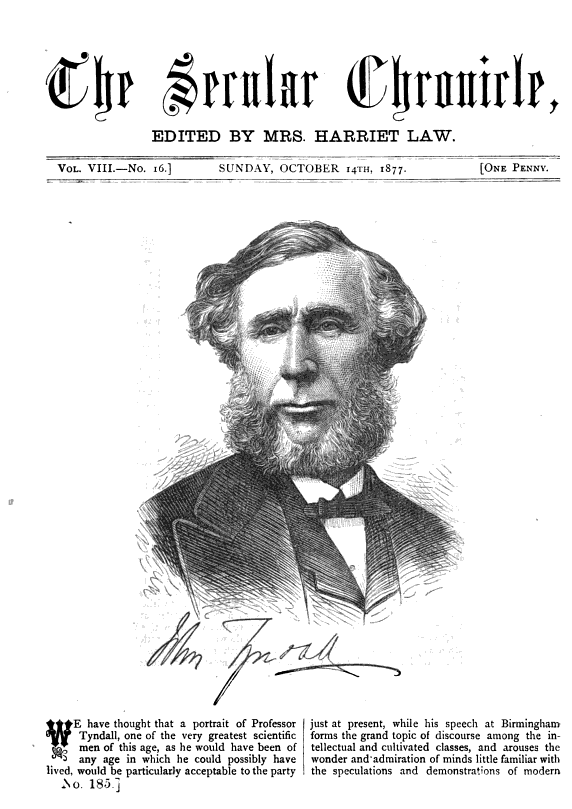
From the evidence of his journal, Tyndall as a young man was anxious to leave Ireland, and showed no sympathy for the declining Irish language around Youghal. His Belfast address (1874) and subsequent Apology (a forthright defence) evoked from the catholic church in Ireland a pastoral letter (1875) denouncing him for blasphemy. This is believed to have been written for Cardinal Paul Cullen (qv) by P. F. Moran (qv). Moran, like Tyndall, came from Leighlinbridge, where both have commemorative monuments. Tyndall in later life became an active opponent of home rule for Ireland, and his unionism was a means of reconciliation between himself and G. G. Stokes (qv), who opposed him in the politics of science. Otherwise, one of his most enduring links with Ireland was as scientific adviser to the Board of Trade and Trinity House; in this capacity he supported from 1869 a gas illumination system for lighthouses, developed in Dublin by John Wigham (qv). In 1883 he resigned as scientific adviser in protest against Trinity House’s treatment of Wigham, who was eventually compensated. Tyndall was proposed for honorary membership of the RIA in 1866; but Darwin was elected instead, and Tyndall never subsequently became an MRIA.
He married (29 February 1876) Louisa Charlotte (1845–1940), eldest daughter of Lord Claud Hamilton, the brother of James Hamilton (qv), 1st duke of Abercorn; the marriage, though happy, was childless. After repeated illness, aggravated by the medical treatments of the time, Tyndall died on 4 December 1893 from an accidental overdose of chloral, and was buried in Haslemere, Surrey, near his Hindhead home.
Correspondence and other papers survive in the BL, Cambridge University Library, and other archives. Many likenesses are in the National Portrait Gallery and the Royal Institution of Great Britain, both in London. Tyndall is commemorated by the names of towns, mountains, and other geographical features in North America, New Zealand, and the Alps (notably Pic Tyndall on the Matterhorn), and by monuments erected by his widow (who also wrote the DNB article on him) at Bel Alp, Switzerland, and at Leighlinbridge.
J. Tyndall, Discourses given by John Tyndall at the Royal Institution of Great Britain, i: 1853–71; ii: 1872–86; A. S. Eve and C. H. Creasey, Life and work of John Tyndall (1945); D. Thompson, ‘George Edmondson (1798–1863)’, The Friends’ Quarterly, x (1956), 24–9; J. R. Friday, R. M. MacCleod, and P. Shepherd, John Tyndall, natural philosopher, 1820–1893: catalogue of correspondence, journals and collected papers (1974); S. Brush, ‘The prayer test’, American Scientist, lxi (1974), 561–3; R. Barton, ‘The X-club: science, religion and social change in Victorian England’ (Ph.D. diss., Pennsylvania, 1976); id., The scientific clerisy: examples of influence through journalism and education (1976); W. H. Brock, N. D. McMillan, and C. Mollan (ed.), John Tyndall: essays on a natural philosopher (1981); N. D. McMillan and J. Meehan, John Tyndall: ‘X’emplar of scientific and technological education (1981); J. Morrell and A. Thackray (ed.), Gentlemen of science: early correspondence of the British Association for the Advancement of Science (1985); B. V. Lightman, The origins of agnosticism: Victorian unbelief and the limits of knowledge (1987); N. D. McMillan, ‘British physics – the Irish role in the origin, differentiation and organisation of a profession’, Physics Education, xxiii (1988), 272–8; id., ‘Tyndall studies: Part 1, biography’; ‘Part 2, Tyndall in the mountains’; Tyndall Mountaineering Club commemorative book (1991), 4–8, 44–5; id., ‘John Tyndall’, Dictionnaire des philosophes de France (1982; enlarged entry in 2nd ed., 1993); N. D. McMillan, D. D. G. McMillan, and J. Cooke (ed.), Prometheus’s fire: a history of scientific and technological education in Ireland (2000) (analysis of the G. G. Stokes–Tyndall correspondence); J. D. Burchfield, ‘John Tyndall and the Royal Institution’, F. A. J. L. James (ed.), The common purposes of life (2002), 147–68; J. S. Wilkins, ‘Spontaneous generation and the origin of life’ (2004; www.talkorigins.org/faqs/abioprob/spontaneous-generation.html); B. Lightman, ‘Scientists and materialists’, G. Cantor and S. Shuttleworth (ed.), Science serialised: representations of the sciences in nineteenth-century periodicals ([2004?]), 199–237
Main image: John Tyndall by Lock & Whitfield, printed by Frederick Hollyer, platinotype on card mount, 1877 or before. NPG x13252 © National Portrait Gallery, London
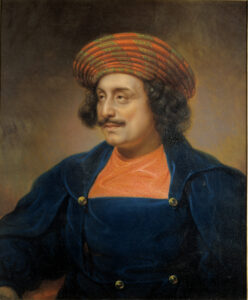
Indian social and religious reformer Rammohun Roy is sometimes referred to as the ‘father of modern India’: a progressive thinker, […]
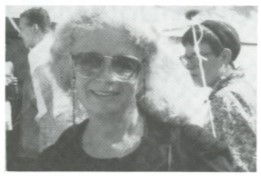
Born Lotte Reyersbach in Oldenburg, Germany in 1923, Sharley McLean arrived in England on the Kindertransport as a teenager. Both […]

Conservation… draws us towards not only a scientific but a philosophical and historical approach to the problems of the earth […]
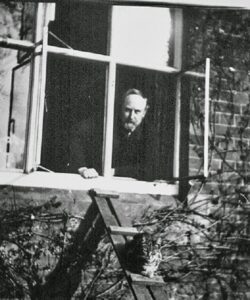
I felt flattered by the remark of a hostile journalist that I was “a compendium of the cranks,” by which […]